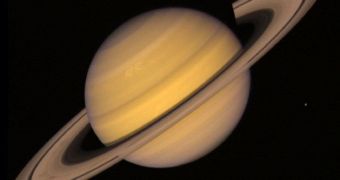Saturn is one of the most interesting planets in our solar system for sky-gazers, though it's not easily visible in the night sky. But the planet is now the closest it's going to get to Earth for a while and it's also at its brightest.
This means that it will be visible with the naked eye all night long and you'll be able to pick out a lot of details, including the rings and some of its 62 moons even with a small telescope or a pair of binoculars.
With luck and good equipment you may even be able to make out the strange hexagon cloud pattern at the north pole.
The best possible time for viewing was last night, when Saturn was in direct opposition to the Sun. But it's going to be very bright tonight as well and for a while longer.
Saturn is close to the blue-white star Spica, while Saturn itself is yellowish. You can find Spica by following the curve of the Big Dipper right through Arcturus and then to Spica. EarthSky has a guide.

 14 DAY TRIAL //
14 DAY TRIAL //